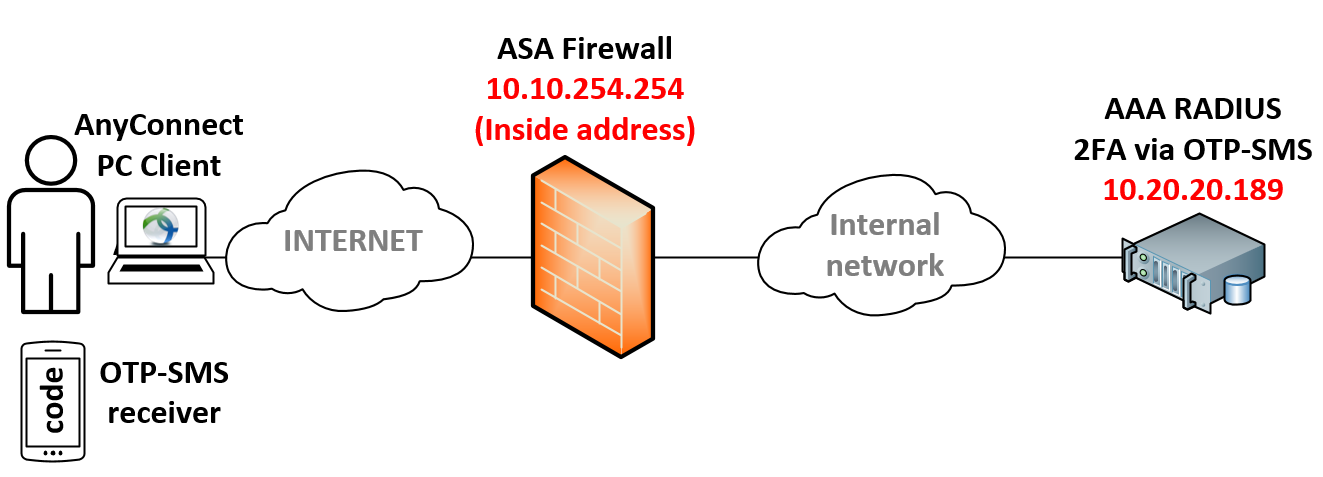Something strange would happen when I connected to a Firepower 2130 running Firepower Threat Defense with Cisco AnyConnect.
- User Credentials Entered Anyconnect On Mac
- User Credentials Entered Anyconnect Download
- Cisco Anyconnect User Credentials Entered
- User Credentials Entered Anyconnect Page
Nov 25, 2015 My previous posts apply when 'Turn off password protected sharing' is set in Advance sharing. With W10 set to use password protection, no user, password combination on W7 works. Not W10 passwords nor W7 passwords. On the other hand, W10 does get access to the W7. I use the W10 user pass and get access to everything shared on W7. Recommended User Response Use the SetMTU utility that comes with the legacy Cisco VPN Client to set the MTU to 1374, the minimum MTU for IPv6 on the physical adapter, or set it to a greater value. You will likely need to consult with your organization's technical support to perform this task. There you will find a 'Cisco' folder with the Anyconnect VPN program icon. Click on the icon to launch the AnyConnect VPN client. Using the Windows Cisco AnyConnect VPN Client; Once launched you will be asked to enter your WPU user account and password. If the 'Connect to:' field is empty please enter vpn.wpunj.edu. The AnyConnect server on the MX supports client certificate authentication as a factor of authentication. If certificate authentication is enabled, the AnyConnect server will use the uploaded trusted CA certificate to validate authenticating clients before requesting for the users' credentials. On “Username” and “Password” field enter the user credentials (e.g UserA, test123). Cisco AnyConnect SSL VPN Client on Cisco ASA 5500 The convenience and advantages of secure VPNs has driven the specific technology to keep evolving continuously.
Basically, the AnyConnect client would contact the VPN gateway just fine, prompt for user credentials, authenticate and connect but then literally after about 3 seconds of being connected it would immediately drop and attempt to reconnect again. This would typically happen about two or three times before the VPN client would make the connection and stay connected and stable. I actually never had to re-enter my user credentials during this connect / reconnect process.

User Credentials Entered Anyconnect On Mac
While there are some topics discussed that I found by doing a couple of searches, none of them explicitly talked about Firepower 2100 series appliances, Firepower Threat Defense, or Firepower Management Center (FMC) in particular. Most articles or forum discussions were centered around ASA Firewall topics, but I think the concept behind the fix is the same.
A little bit of background regarding what device(s) are at play here:
- Cisco Firepower Management Center 6.2.3.7-51 running on VMware
- Cisco Firepower 2130 Next Generation Firewall on Firepower Threat Defense 6.2.3.7-51
- Cisco AnyConnect Secure Mobility Client 4.5.05030 on Windows 10 64-bit
User Credentials Entered Anyconnect Download
Let’s take a look at some logs to see the problem in action.
Some information seemed to point to DTLS as being the problem and while the link here suggests this on ASA releases 9.0 and 9.1, the topic of MTU size caught my eye. Some other posts I read mentioned MTU as well, so I figured I would change the default MTU size from 1406 to something different and see if this helped, and it did.
Let’s see the problem first hand. Here are the message history logs from within Cisco AnyConnect:


What is the workaround to solve this “reconnecting” behavior?
Let’s go into FMC and change the MTU settings for the Group Policy associated with your Remote Access VPN setup.

Navigate to Objects tab > VPN > Group Policy > NAME OF YOUR RA VPN GROUP POLICY > Click on the pencil “Edit” icon.
Once you are on the Edit Group Policy screen, go to the “AnyConnect” Tab > SSL Settings > Change MTU Size to 1300 Bytes.
Cisco Anyconnect User Credentials Entered
Don’t forget to click on Save at the bottom and then deploy the changes to the firewall that AnyConnect clients are connecting to. Grab some coffee, and check the latest weather update (since FMC takes a while to push policy… ugh). Once it is done, let’s connect through VPN and take a look at those AnyConnect message history entries again.
The logs show that the VPN connection was made, and then no reconnects were tried after the successful connection. I let the client stay connected for a few minutes just to make sure everything was OK, then manually disconnected at 11:27:06.
While leaving the MTU setting at 1300 bytes may not be possible for whatever environment you are working in, for now this seems to be working just fine. At any given time we have only about 50 concurrent AnyConnect sessions, so it’s a fairly low volume of remote workers that are being supported. If any long-term issues arise from this setup, i’ll be sure to update this post.
User Credentials Entered Anyconnect Page
Thanks for reading, good luck!
